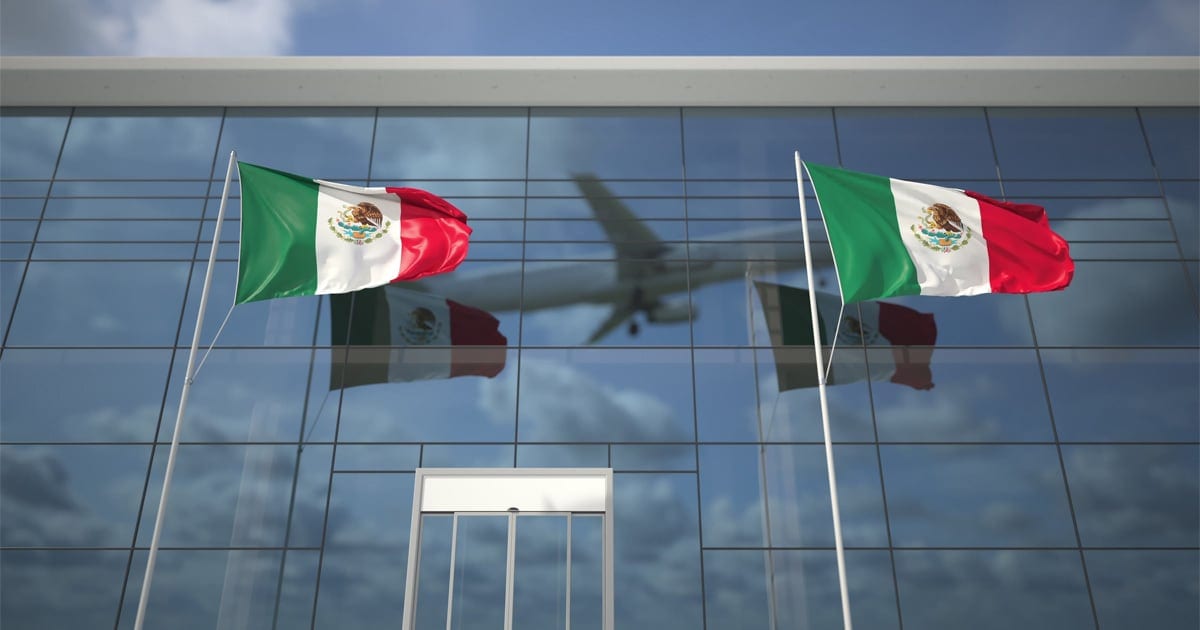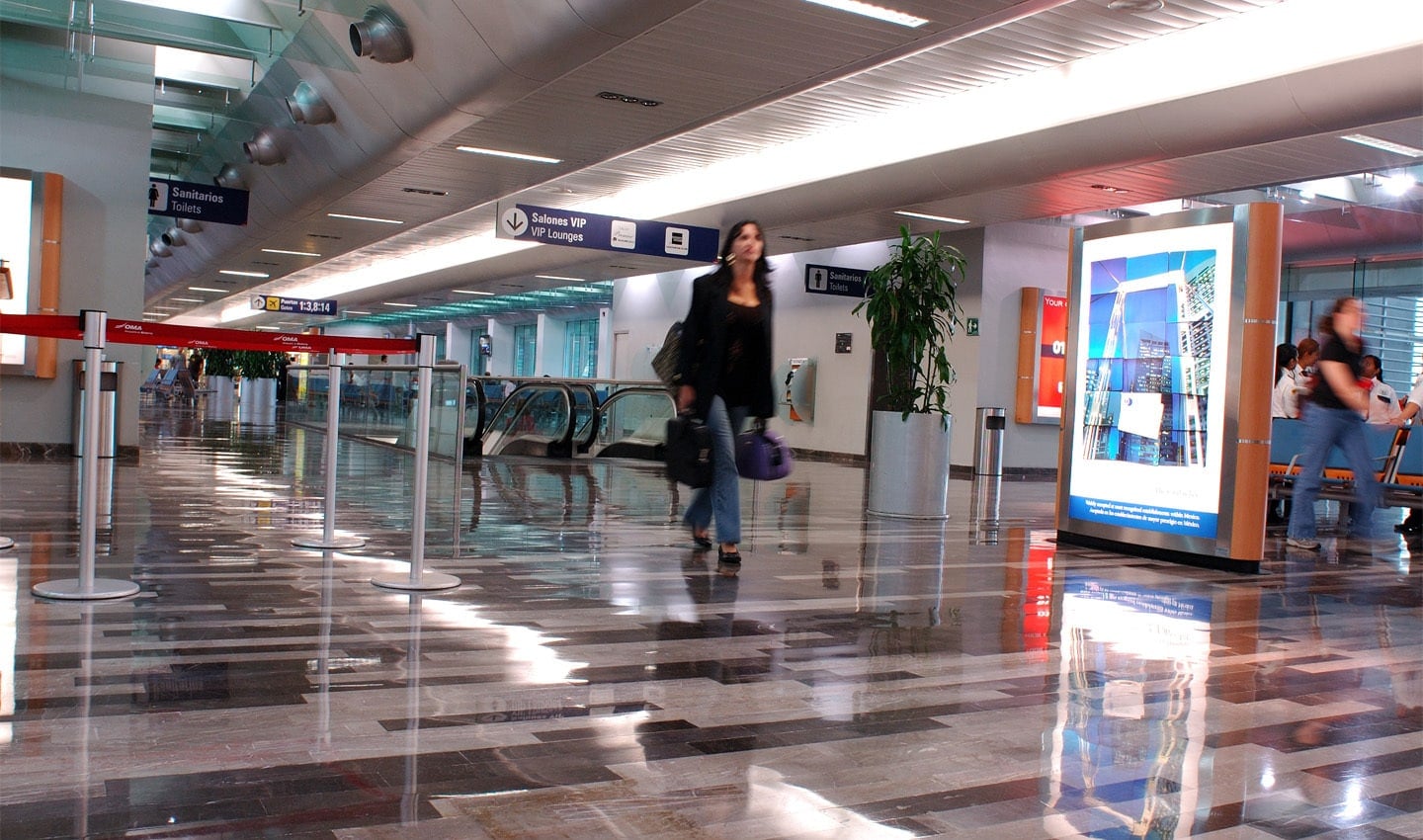
It’s that time of the year again: your holiday has arrived. You’re loading bags into the car ready to head to the airport. You’re excited, but you’ve got a flight to catch, and time is ticking. Sandy beaches and hot sun await but hang on – your navigation isn’t working properly. You’re being led in circles, with no way of knowing how to get to the airport.
Airports are a core part of any big city. A giant landmark, a place that welcomes and waves goodbye to thousands of people every day. They should be easy to get to and navigating around them should be clear – but unfortunately, this isn’t always the case. The unfamiliar and unconventional infrastructure that usually surrounds an airport can provide a challenge even to those familiar with the local area.
Thankfully, digital maps and navigation systems provide a way for travelers to prepare in advance and reach their flight in time. But maps don’t just appear out of thin air. Making them takes time, dedication and collaboration between multiple sources — as we’ve seen recently, when Mexico City opened its newest airport, the International Airport Felipe Angeles (AIFA).
Mexico’s new airport: A new challenge
AIFA was built to provide support for the city’s main airport, Benito Juárez International Airport (AICM). Over the past decade, AICM has gotten so busy that another airport was needed. 136,000 people fly out of Mexico on average each day— 36 million over a year, as of December 2021. Before the pandemic, that number was even larger.
On March 21, 2022, journalists and visitors flocked to the new airport for the grand opening event. Only... many found themselves lost when various sat navs and digital maps were unable to provide a clear and direct route.
With AIFA, destined to be a vital travel hub for Mexico City, travelers would soon be catching flights from there assuming they could get to the airport and navigate around potentially complex infrastructure.
But due to a lack of sources, there were multiple hurdles in the way of what would usually be the simple task of mapping a new piece of infrastructure. See, the airport had been under construction since 2018 but in all that time, the Mexican Army – which oversaw its construction – had published very little information about the airport. This meant that visitors were on the short end of the stick, with airport management and mapping services at an impasse.
The invitation
Back in March 2022, just three days before its grand opening, Mexican authorities sent TomTom an invite to visit and survey AIFA to update its maps. Surveys like this are not usually part of TomTom’s modus operandi, but this time was different. TomTom needed to ingest the location data and input it into a map – and quickly. Otherwise, airport visitors would easily get lost on opening day and beyond.
Having a base map helps when building in more detail, but TomTom had virtually nothing to go on. TomTom’s Sourcing Operations Maps Team in Mexico sought as much information as they could while the airport was under construction. Despite these efforts, details remained scarce.
The best, and only option, was to survey the airport on the ground. There was no other way to make a digital map of the area in time for opening day. This would allow TomTom to map the airport’s roads, infrastructure and features. For drivers, and especially ride-hailing services, that rely on TomTom’s maps, it would allow day one to go without a hitch.
Everyone was dealing with the same reality. All digital map makers would need to visit the airport in person, in order to create their own maps. But on the day, it turned out that TomTom was the only mapping company attending the survey.
It’s all about the journey
In an attempt to gather more pieces to the puzzle, the Local Intelligence Team submitted direct requests to the Mexican Army. The little data TomTom received motivated them to look at other sources. Government-run social media accounts proved fruitful. Local Intelligence was able to see a couple of roads through airport renders, posted by government agencies on YouTube.
While these strategies provided some insight into the mystery, they weren’t enough to paint the entire picture.
Local Intelligence then began looking at satellite photography. It provides a useful and static source of information for mapmakers to determine where roads are being built. TomTom also used probe data. Any vehicle with TomTom tech can be an anonymized sensor probe, reporting back to TomTom its location at regular intervals, which in turn allows the company to plot its route. By comparing this to the landscape where AIFA was being built, major roads could be identified. But it was still unclear which roads would be open to the public.
TomTom’s proactivity in surveying the airport put it ahead of the game — but there was still work to do. It needed to take all the location and surveyed feature data and turn it into a useful map. One that would power its navigation systems and its map. To do that, the location company used its host of proprietary systems which turns raw location information into data that forms layers of a digital map.
Attending the airport ahead of opening day to conduct its survey, TomTom had all the information it needed to make a first map of the area. For this, TomTom used a system called Actuality, which is normally used in emergency situations such as natural disasters. But due to the urgency of the situation, and the need to create a map quickly, Actuality was the perfect solution. Actuality let TomTom map the area incredibly quickly and made it easier to add changes in the future — even at a new airport, things are always changing in terms of infrastructure. Mapping is a never-ending process.
So, once a TomTom employee had attended the survey and documented all roads — public and private – the data could be inputted quickly and efficiently. By the time the airport opened three days later, the map was up and running.

The map was up and running in time for the airport opening.
Sharing is caring
Because TomTom was the only company to turn up to the survey, it was the only mapping service with a reliable and accurate map. But not everyone had access to it, because not everyone uses TomTom maps.
The value of TomTom’s AIFA map became clear on opening day. For those that were using TomTom navigation, they were able to find the airport through the new roads, arriving on time. Those who used alternative services, didn’t fare as well.
Journalists covering the opening day found themselves spending extra time trying to find the airport and others still faced issues visiting the airport after March 21. As AIFA is also further outside the city than the main airport, AICM, journeys are already longer. One journalist reported that there was little to no signage on their way to AIFA, with the signs that were around pointing the driver in a different direction to what the GPS was saying.
In the case of one community-based navigation app, the service couldn’t even update its map due to its reliance on crowdsourcing updates. This is fine for updating already known roads, but it’s not that useful for guiding drivers when they’re on entirely new roads/infrastructure. Without geometry or points of interest (POIs), its users couldn’t get to the airport in the first place to provide the data to map it.
Other mapping services’ dependency on community-only inputs, and lack of local intel resources put them and their users at a disadvantage – one that TomTom was able to help with in the days after. TomTom shared the airport updates with the Mexican government, so that other mapping services could access the information.
But even a month after the airport opening, TomTom still had the most up-to-date, relevant and accurate map data for its users. Within a month, enough probe data had been collected to show that TomTom’s map was correct and working well.
Doing field collection was a break from the norm but it worked in TomTom’s favor. By focusing on the data collected, as well as updates given by the Mexican government, a working map was available in time for those heading to the airport — in just three days.
On March 21, TomTom saw around 1,159 trips with its map service, a number that increased to over 5,000 by the end of the month. The AIFA airport welcomes around 2,000 visitors a day, meaning a fair share of them use TomTom’s maps to get there. As of June 24, 31,647 trips have been made to the AIFA airport using TomTom navigation.
TomTom’s work on the AIFA map was a result of team collaboration and making sure that nothing was missed. While the situation was trickier than usual, with a lack of communication between the Mexican government and various mapping companies, TomTom was determined to provide an accurate map for its users in time for opening day. And thanks to the Local Intel Team, as well as others, that was possible — and shared freely for the benefit of all.
People also read
)
Chaotic airports or congested roads? How Europe will travel in 2022
)
How Melissa Data is getting locations right
)
Unlock business insights with traffic data and spatial analysis
* Required field. By submitting your contact details to TomTom, you agree that we can contact you about marketing offers, newsletters, or to invite you to webinars and events. We could further personalize the content that you receive via cookies. You can unsubscribe at any time by the link included in our emails. Review our privacy policy. You can also browse our newsletter archive here.
)